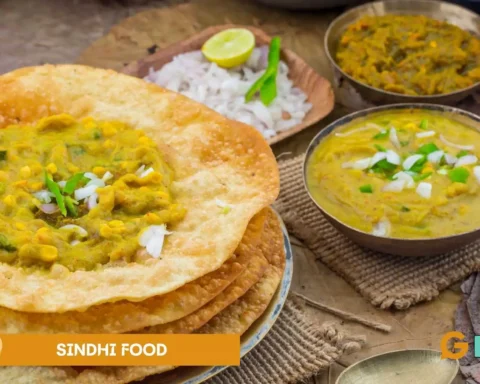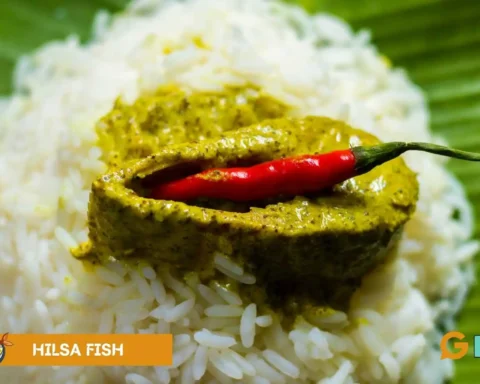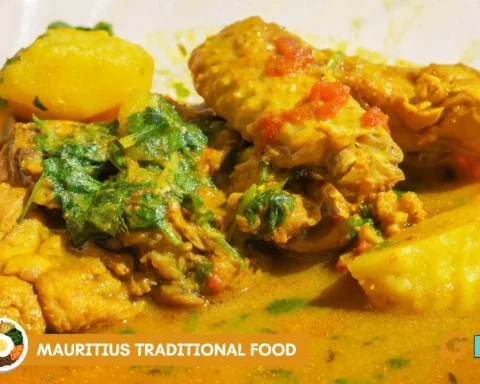Eshabwe, a rich and flavorful dish with its roots deeply intertwined in cultural history, stands as a testament to the culinary heritage of certain African regions. From its humble beginnings to its cherished place on modern tables, preparing Eshabwe is a captivating exploration that traverses time and tradition. This delectable delicacy, renowned for its creamy texture and unique taste, encapsulates a medley of ingredients and the stories and customs of the communities that have nurtured its legacy.
In this culinary journey, we delve into the origins, the essential components, and the intricate art of crafting Eshabwe, uncovering the intricate threads that bind its cultural history to its core ingredients.
Table of Contents
The Origins of Eshabwe: A Glimpse into Cultural History
Eshabwe, a revered traditional dish and a staple in special ceremonies, holds a significant place as a quintessential Ugandan condiment. Its history traces back through generations, revealing the deep cultural roots that have nurtured this beloved delicacy.
Central to the preparation of Eshabwe is the adherence to a traditional formula that has been faithfully preserved over time. The process often begins with selecting high-quality butter, a crucial ingredient that forms the heart of Eshabwe. Traditionally, butter samples were meticulously chosen based on their varying textures, colours, and aromas, which influenced the final dish’s unique flavour profile.
The creation of Eshabwe involves a meticulous handcrafted approach, where the use of modern tools is limited. The transformation of butter into the creamy Eshabwe is achieved through the rhythmic motion of a wooden masher skillfully wielded to churn and blend the butter into a harmonious consistency. A wooden spoon is then employed to stir the remaining components, each contributing to the dish’s complexity.
Notably, the contents of the butter samples play a pivotal role in shaping the character of Eshabwe. The variations in milk sources and grazing conditions lend distinct nuances to the butter’s composition, which are then artfully harmonized during the preparation process. This amalgamation of flavours produces an Eshabwe, a symphony of tastes representing the region’s agricultural diversity.
Beyond its culinary significance, Eshabwe is deeply interwoven with cultural traditions. It often graces the tables of celebratory feasts, symbolizing unity and abundance. Special ceremonies and gatherings bear witness to the labour-intensive preparation of Eshabwe, a process that not only nourishes the body but also feeds the soul, connecting individuals to their heritage.
In conclusion, the origins of Eshabwe are steeped in cultural history and traditions that reflect the Ugandan way of life. With its traditional formula, wooden masher technique, and meticulous selection of butter samples, this cherished dish showcases the essence of culinary artistry in its purest form. As time progresses, the legacy of Eshabwe continues to endure, reminding us of the importance of preserving cultural heritage through food.
The Key Ingredients of Eshabwe
At the heart of crafting Eshabwe, the treasured Ugandan condiment, lies a careful selection and harmonious combination of key ingredients. This fusion of flavours creates a symphony that delights the palate and pays homage to generations of culinary tradition.
1. Millet Bread: The foundation of Eshabwe often begins with millet bread, a staple that forms the base for this savoury delicacy. This humble bread provides a canvas upon which the layers of taste and texture are artfully assembled.
2. Warm Water: Adding warm water is crucial in preparing Eshabwe. It serves as the catalyst for unlocking the flavours of other ingredients, aiding in the dissolution of essential components that will eventually contribute to the dish’s overall richness.
3. Rock Salt: The judicious use of rock salt imparts a balanced and nuanced saltiness to Eshabwe. This natural mineral enhances the flavours of the other ingredients without overwhelming them, resulting in a harmonious blend that tantalizes the taste buds.
4. Lukewarm Water: Lukewarm water, distinct from warm water, plays a specific role in creating the desired consistency of Eshabwe. It aids in achieving the perfect texture, ensuring that the dish is neither too thick nor too thin.
5. Cold Water: Cold water acts as a cooling agent, tempering the temperature and preventing the mixture from becoming too hot during preparation. This gradual cooling is essential for achieving the desired Eshabwe consistency.
6. Salty Water: Salty water, created by dissolving rock salt in water, is added to the mixture to infuse the condiment with saltiness. This step further showcases the meticulous attention to detail in perfecting the taste profile.
7. White Sauce: White sauce adds a luscious and velvety texture to Eshabwe. This component contributes to the dish’s overall creaminess and forms a base for the infusion of other flavours.
8. Mature Ghee: Mature ghee, known for its deep and rich flavour, lends Eshabwe a distinctive bold and indulgent taste. This ingredient is a cornerstone of the condiment, contributing to its luxurious essence.
9. Raw Ghee: Raw ghee complements mature ghee, adding a layer of complexity to the dish’s taste profile. The balance between mature and raw ghee is a delicate art, ensuring a harmonious interplay of flavours.
10. Ghee Sauce and Shea Butter Oil: The fusion of ghee sauce and shea butter oil provides a unique depth to Eshabwe, enhancing its silkiness and imbuing it with a spectrum of flavours. This amalgamation of fats showcases the versatility of the dish’s composition.
The Art of Crafting Eshabwe: A Step-by-Step Guide
Crafting Eshabwe, the cherished Ugandan condiment, is a delicate and deliberate process that embodies the essence of culinary artistry. Each step is a dance of flavours, textures, and traditions, resulting in a dish that captures the heart and heritage of the region. Here is a step-by-step guide to mastering the art of preparing Eshabwe:
1. Begin by crumbling millet bread into a bowl. This serves as the foundation upon which the layers of Eshabwe will be built.
2. Gradually add warm water to the crumbled millet bread, allowing it to absorb the moisture. The warmth awakens the flavours of the bread and initiates the infusion process.
3. Sprinkle rock salt into the mixture, ensuring a balanced saltiness that enhances the overall taste.
4. Incorporate lukewarm water to achieve the desired consistency. This step ensures that the mixture is neither too thick nor too thin, setting the stage for the subsequent additions.
5. Gently pour cold water into the mixture to prevent overheating. Stirring continuously, this step maintains the ideal temperature and consistency.
6. Add the salty water – a dissolved rock salt solution – to infuse the mixture with the right amount of saltiness. Careful measurement ensures a harmonious balance of flavours.
7. Gradually introduce white sauce to the mixture, stirring gently to incorporate. The white sauce contributes to the velvety texture of Eshabwe, setting the stage for the richness to come.
8. Add mature ghee to the mixture, allowing its deep flavour to permeate. The mature ghee imparts a signature richness to Eshabwe.
9. Balance the mature ghee with the addition of raw ghee, layering the dish with complexity. This interplay of mature and raw ghee ensures a dynamic taste profile.
10. Combining ghee sauce and shea butter oil, slowly integrate this blend into the mixture. This amalgamation of fats creates a sumptuously smooth texture and a multi-dimensional flavour experience.
11. Throughout the process, maintain a steady and continuous stirring motion. This ensures uniform distribution of ingredients and prevents any elements from settling.
12. Allow the mixture to reach its final consistency – a luxurious, creamy texture that embodies the essence of Eshabwe.
13. remove the mixture from the heat source once the desired consistency is achieved.
Eshabwe in Modern Times: Evolution and Adaptations
As the world continues to evolve, so does the culinary landscape. Eshabwe, the esteemed Ugandan condiment, has not remained untouched by these changes. While its essence remains steadfast, the dish has undergone subtle shifts and adaptations to meet the demands of modern times.
Evolution of Ingredients:
In modern times, the availability of ingredients has expanded beyond traditional boundaries. While the fundamental elements of Eshabwe remain unchanged, some variations may emerge due to access to different types of butter or adjustments in the sourcing of ghee. This evolution allows Eshabwe to maintain its authenticity while accommodating contemporary ingredient availability.
Innovative Techniques:
Modern kitchen tools and techniques have introduced innovative ways to prepare Eshabwe. While the traditional wooden masher and spoon are still revered, electric mixers and blenders have found their place in modern kitchens. These tools streamline the preparation process, ensuring the same rich flavours and textures with increased efficiency.
Culinary Fusion:
Culinary fusion has become a hallmark of modern gastronomy in an era of global connectivity. Eshabwe has yet to escape this trend, as chefs and home cooks experiment with combining it with other cuisines, resulting in delightful new flavour profiles. Eshabwe might find its way into wraps, sandwiches, or pairings with international dishes, adding a touch of Ugandan heritage to diverse culinary creations.
Health-conscious Adaptations:
With an increased focus on health and dietary preferences, adaptations of Eshabwe to cater to specific nutritional needs have emerged. Lighter versions with reduced fat content or alternative fat sources, such as plant-based oils, have become popular among health-conscious individuals.
Preservation of Tradition:
Despite modern adaptations, there remains a strong commitment to preserving the traditional methods of preparing Eshabwe. Many individuals and communities understand the importance of safeguarding cultural heritage and continue passing the authentic recipes and techniques to younger generations.
Culinary Creativity:
Modern times have also seen culinary enthusiasts experimenting with Eshabwe in creative ways. From incorporating it into modern dishes to reinventing its presentation, Eshabwe’s versatility allows for imaginative culinary creations that honour tradition while embracing innovation.
Conclusion
Eshabwe transcends its status as a mere dish; it serves as a poignant connection to cultural heritage, a joyful celebration of time-honoured traditions, and a vivid illustration of the enduring power of culinary art.
Each spoonful of Eshabwe has a taste of the past and a flavour of the future. It symbolizes the essence of preserving our culinary legacies, cherishing the wisdom of our ancestors while welcoming the influence of changing times. This cherished condiment is a testament to the enduring magic of food—how it unites generations, carries stories, and nourishes not only our bodies but also our souls.
FAQs
What is the use of Eshabwe?
Eshabwe serves as a luxurious and flavorful Ugandan condiment traditionally used to enhance the taste of meals, elevate celebrations, and symbolize unity in special gatherings and ceremonies.
What is Eshabwe made of?
Eshabwe is primarily made from a base of millet bread blended with warm water, rock salt, lukewarm water, white sauce, mature ghee, raw ghee, ghee sauce, and shea butter oil, resulting in a creamy and rich traditional Ugandan condiment.
How do you preserve Eshabwe?
To preserve Eshabwe, storing it in an airtight container in the refrigerator ensures it remains at a consistently cool temperature, which helps maintain its texture and flavour over time.
How do you store Eshabwe?
Store Eshabwe in an airtight container in the refrigerator to maintain its freshness, texture, and flavour over time.










[…] to future generations. Aboriginal art serves as a powerful reminder of the rich and diverse cultural history of Indigenous people in […]